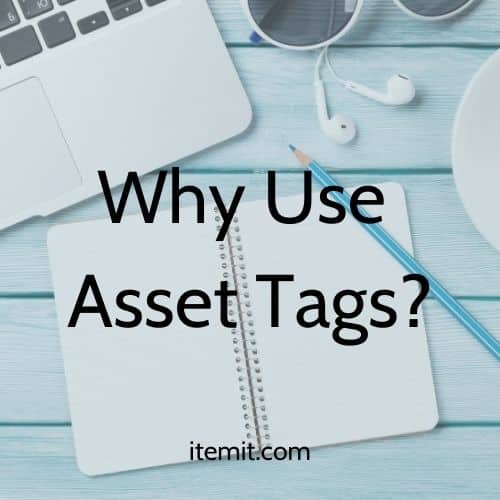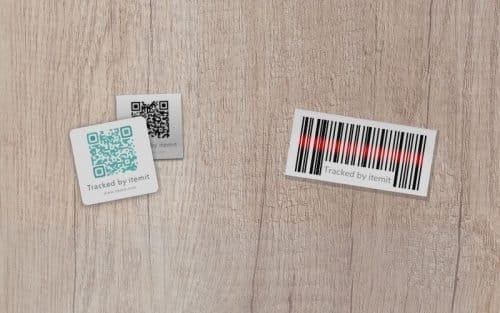
The functionality asset tags allow you to play with improves your asset tracking. Asset tags help save you time and money by giving you more control over your assets.
With asset tags, you’ll be able to:
- Quickly edit asset information
- Update locations instantly
- Save time
- Increase accountability over assets
- Increase how shareable your asset tracking processes are
- Increase visibility over your assets

How Do Asset Tags Work?
Asset tags work by linking physical assets to online, digital profiles. When you’re asset tracking, you’ll create digital profiles of all of your assets. These profiles are where you can add crucial financial, maintenance, and location data.
When you have an asset register, you’ll be able to stick physical asset tags onto your assets. These asset labels can then be scanned into your system so that every subsequent scan retrieves the corresponding asset’s digital profile.
Asset tags come in all different shapes and sizes. You’ll be able to use barcodes, QR codes, RFID tags, and GPS trackers.
QR code asset tags are helpful as they’re unique, meaning you’ll be able to create unique assets in your asset profile, making retrieval and data entry simpler.
What Are The Benefits of QR Code Asset Management?
The benefits of QR code asset management are clear. You’ll be able to view, edit and update asset information by scanning an asset’s tag and then logging any changes.
Every scan of an asset label also updates the asset’s last seen location and the user who scanned it. This all provides you with multiple benefits.
Speed Up Audits
The ability to scan an asset’s tag and retrieve that asset’s profile speeds things along greatly.
If you notice an asset requires maintenance, therefore, all it takes is a scan of an asset’s tag, and you’ll be able to log necessary maintenance instantly.
You’ll also be able to use quick-add functionality. What this means is that you’ll be able to scan multiple assets into a new location or collection quickly.
Create Location Data
As every scan updates an asset’s last seen location and the user who scanned it, you’ll be able to see exactly where assets were when they were interacted with.
This location history will be visible in your asset management software, meaning you’ll be able to see which assets move frequently and which don’t. Overall, this helps you make effective retrieval and financial decisions.
As you know where assets are, you’ll be able to save money on petrol and save time finding assets for use on your projects.
Asset tags also increase the shareability of your asset tracking software. As digital asset profiles are linked to physical tags, this means that anyone with access to the system will be able to scan the tag and update asset information.
You’ll also be able to set user permissions, meaning that only people with certain accesses can view certain information. Anyone will still be able to scan an asset in and out of a site, however, making everyone’s life easier.
To find out more about how asset tags can help you save time and money, why not set up a quick demo with the team?
You can also contact us at team@itemit.com or fill in the form below to start your 14-day free trial of our system. Use our tags for additional security and peace of mind, or use your own to get up and running straight away!
Why not check out these blogs?
Fixed Asset Tagging: How to Use Fixed Asset Inventory Tags
What is a Computer Asset Management System?
Start Your Free Trial With Your Own Asset Tags!

Try itemit
Choose a better way to track
your assets.
Start your free 14-day trial now!

Keep Learning
itemit Blog
Tips, guides, industry best practices, and news.
Track Your Agricultural Assets With RFID Tags
Discover how RFID technology enhances agriculture management with better inventory tracking, livestock monitoring, and operational efficiency, even for small farms.
Which Is Better? RFID Tags Or Barcodes?
Is RFID asset tracking better than using barcodes or is it vice versa? Read this post now to discover which option is ideal for you!
The Future Of Asset Tracking Involves RFID Tags: Here’s Why
Find out exactly why the future of asset tracking in the workplace involves RFID asset tracking by reading this article now!


